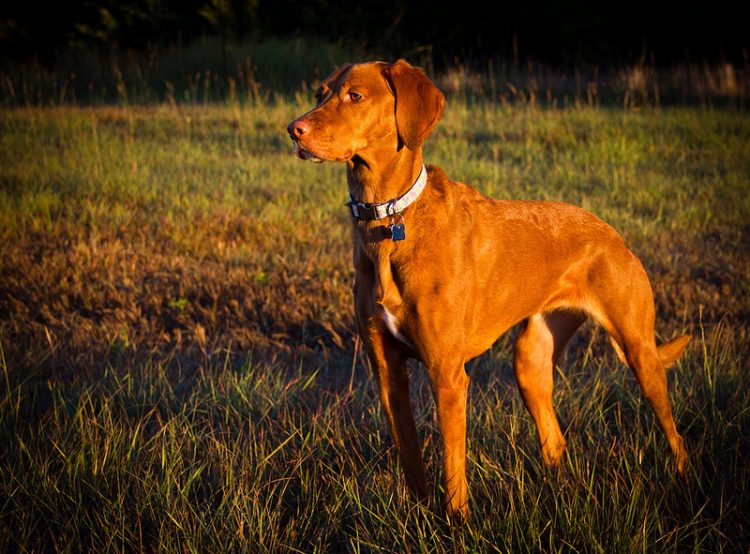
I will never forget the image of my husband racing up the street after our dog. I had dropped Pip’s leash and whoosh — the dog was off. Thankfully, we live on a quiet country road with great visibility, and it was just a matter of David getting close enough to grab Pip’s leash, putting an end to this playtime gone awry.
Unfortunately, not every family catches their dog so quickly, if at all. Thousands of dogs go missing every year. Enter Lost Dogs of America, the organization behind National Lost Dog Awareness Day (NLDAD), the goal of which is to increase awareness of this sad statistic by providing resources for families with both lost and found dogs.
Prevent your dog from becoming a statistic with these simple steps.
1. Train Your Dog
Teaching your dog basic obedience commands can be a lifesaver. Dogs are keen, quick, motion-detecting machines — see squirrel, chase squirrel.
However, simple commands such as sit, stay and come can be the difference between a calm walk through your neighborhood and a crazy chase scene.
Other great benefits of training your dog:
- It helps strengthen your bond.
- It gives your dog something to do — busy dogs are happy dogs.
- Quality time spent working together helps you know and understand your dog more.
- Well-mannered dogs are more welcome at local events and inside friend’s homes and businesses.
2. Walk Your Dog on a Leash
You’ve all seen those carefree dog parents taking a leisurely stroll while their dog wanders ahead or behind them, unleashed.
Don’t be tempted to give it a go. Even the most well-trained dogs can slip up.
Walking your dog on a leash gives you control when the unexpected happens — cat sightings, other dogs, squirrels and birds, a scent or simply just puppy energy.
3. Give Your Dog Plenty of Exercise
Dogs need daily activity. Of course, every breed has different exercise needs, so do your homework to plan a healthy balance of exercise and rest for your dog.
A happy but tuckered pup is much more likely to flop down and curl up for a good nap instead of taking an unchaperoned jaunt through the neighborhood.

4. Be Fence-Savvy
Yes, fences provide security for your dog to pop out and do her business alone. Unfortunately, fences don’t always keep dogs in. They might jump over a short fence, dig underneath, sneak through a gap or race through an open gate.
If you have a fenced-in yard, do regular maintenance checks: Once a month, walk along your fence, checking for signs of rotting posts or boards, holes in progress and general gate security, and make repairs. An excellent security measure is to attach chicken wire to the lower part of your fence and sink it down about 1 foot underground. This little trick deters diggers, both inside and outside your fence.
And always supervise your dog’s activity. Whether you’re out and about with your pup or just letting them out to do their business, periodic glances keep you in the know.
5. Neuter or Spay Your Dog
Intact dogs have a stronger need to wander. Their keen sense of smell and hormonal fluctuations can often lead them astray. Thankfully, you have options — many animal shelters offer low-cost neuter/spay clinics.
Neutering and spaying not only helps tame the call of the wild but also can reduce unwanted litters, future health problems, marking and aggression.
6. Have a Plan for When Guests Visit
Do you have a furry little escape artist? Be proactive. Keep leashes hanging by all the doors where guests frequently enter and leave your house.
Was YOUR Pet Food Recalled?
Check Now: Blue Buffalo • Science Diet • Purina • Wellness • 4health • Canine Carry Outs • Friskies • Taste of the Wild • See 200+ more brands…

Try leashing your dog before your open the door, just in case.
Watch this man reunite with his long-lost dog:

7. Microchip Your Dog
Microchipping is a permanent identification solution that requires a simple, painless procedure. Keep in mind that microchips can only be read with a special scanner found at shelters and veterinary hospitals.
Collars with identification tags are the next best thing. Even if your dog already has a microchip, collar them anyway. Collar tags are handy because they’re easily readable.
Equip your dog’s collar with a contact information tag — include your name and phone number only. Tags displaying a dog’s name make it easy for strangers to lure your dog away. Also, attach the dog’s license, rabies tag and medical ID tag if necessary.


